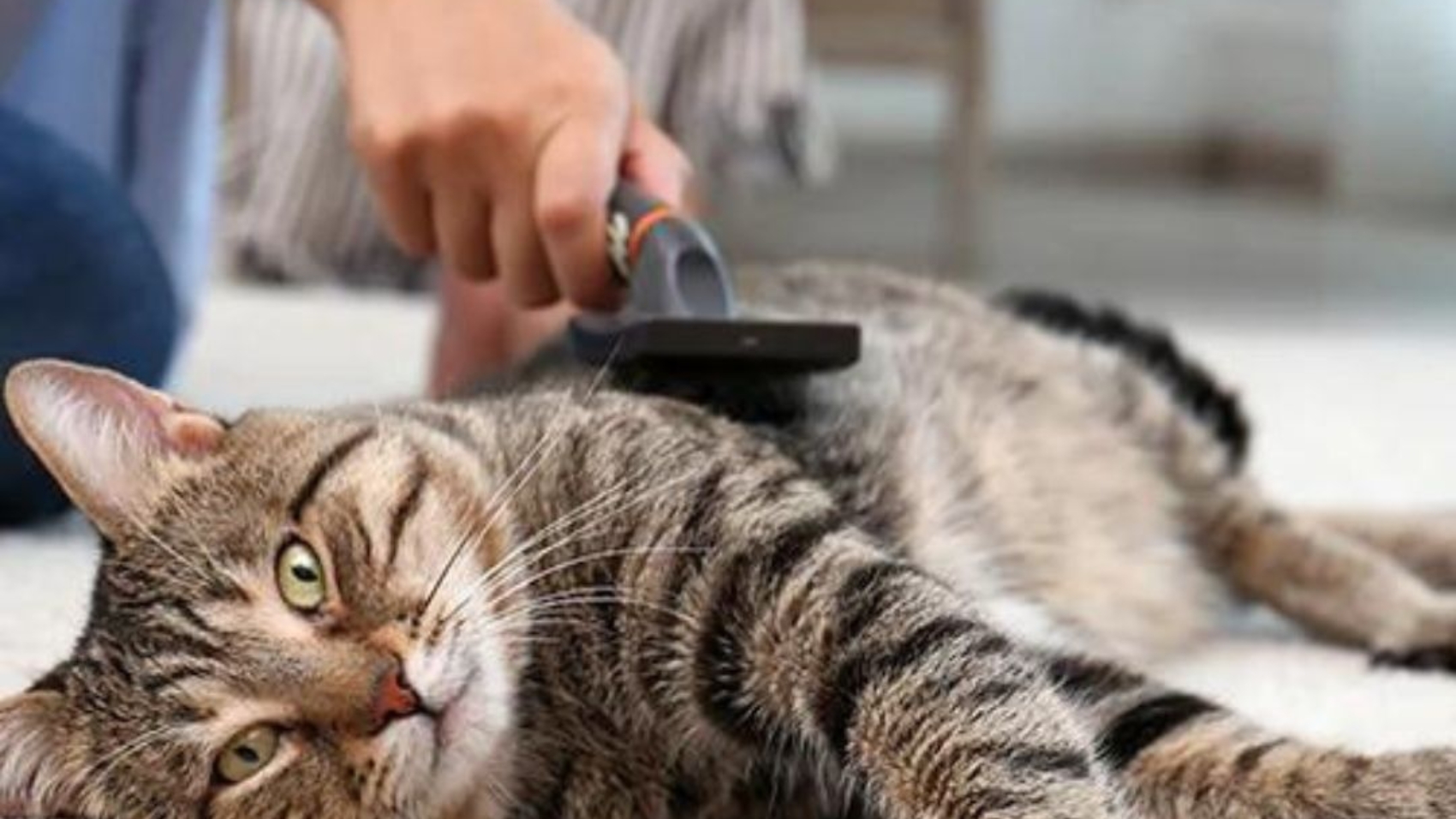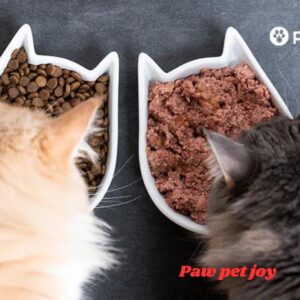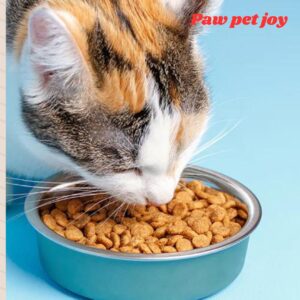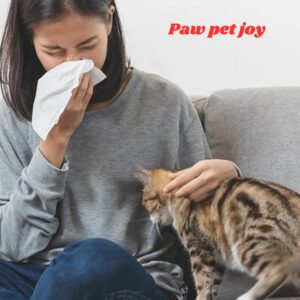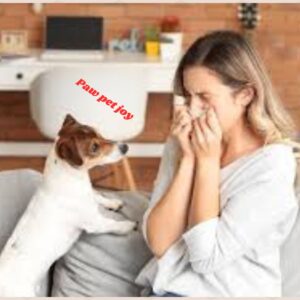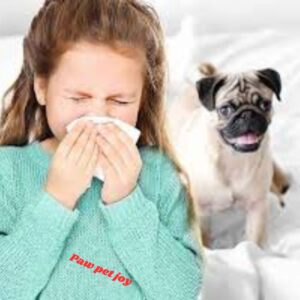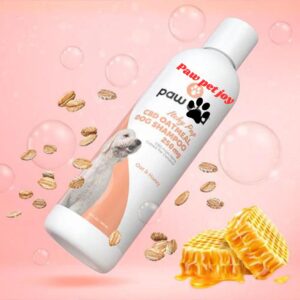Cat healthy list of 10 ways to keep your cat healthy will ensure you’re not only providing your cat with basic care, but helping them live their best kitty life!
Cat healthy require regular care to ensure they live a long, healthy life. From proper nutrition to regular exercise and preventative healthcare, there are many ways we can support our cats’ well-being. We’ll explore the top 10 ways to keep your cat healthy, so you can enjoy many happy years together.
Maintaining your cat’s health involves a combination of proactive measures and attentive care. By providing a balanced diet, ensuring they get enough exercise, and scheduling routine vet visits, you can help prevent common health issues and detect any potential problems early on. Additionally, mental stimulation, regular grooming, and creating a safe environment are all key components of keeping your cat healthy and happy. Let’s delve into each of these strategies in more detail to help you give your pet the best care possible.
- Consistent Veterinary Visits Are Paramount to Feline Health
- Keep Your Cat Healthy with a Nutritious, Complete Diet
- Support Your Cat with Consistent Grooming Practices
- Ensure Regular Litter Box and Toileting Routines Cat Healthy
- Cats Need Daily Dental Care for Comfort
- Cats Need Affection and Mental Stimulation Every Day
- Encourage Daily Exercise for General Cat Health
- Hydration Is Key to Your Cat’s Health
- Spaying and Neutering Will Keep Your Cat Healthy
- Always Keep Your Cat’s Environment Safe
Consistent Veterinary Visits Are Paramount to Feline Health
One of the most important aspects of maintaining the health and well-being of your feline companion is ensuring they receive consistent veterinary care. Regular visits to the veterinarian are crucial in preventing and identifying any potential health issues in your cat.
When it comes to veterinary visits, prevention is key. Cats are experts at hiding signs of illness, making regular check-ups essential in catching any health concerns early on. A comprehensive physical examination by a veterinarian can help detect any underlying health issues that may not be apparent to the untrained eye.
During these visits, your veterinarian will also be able to administer necessary vaccinations to protect your cat against common diseases. Keeping up to date with vaccinations is a crucial part of preventing illnesses that can be potentially life-threatening to your feline friend.
In addition to vaccinations, your veterinarian may recommend preventive measures such as flea, tick, and heartworm prevention. These parasites can pose serious health risks to your cat, and regular veterinary visits ensure that your cat is adequately protected.
Another important reason to schedule regular veterinary visits is to monitor your cat’s weight and overall body condition. Obesity is a growing concern among cats, and a veterinarian can help you develop a proper nutrition and exercise plan to keep your cat at a healthy weight. They can also conduct routine blood work to assess your cat’s overall health and detect any underlying issues that may not be visible externally.
Above all, consistent veterinary visits provide an opportunity for open communication between you and your veterinarian. You can discuss any concerns you may have about your cat’s health, behavior, or well-being, and your veterinarian can provide guidance and support to ensure that your cat is receiving the best possible care.

Keep Your Cat Healthy with a Nutritious, Complete Diet
When it comes to keeping your cat healthy, one of the most important factors to consider is their diet. Just like humans, cats need a balanced and nutritious diet to maintain good health and prevent diseases. A complete and well-rounded diet is essential for your cat to thrive and live a long, happy life.
It’s important to feed your cat a high-quality cat food that is specifically formulated for their age, size, and activity level. Kittens, adult cats, and senior cats have different nutritional needs, so be sure to choose a food that is appropriate for your cat’s life stage. Look for cat foods that are labeled as “complete and balanced” by the Association of American Feed Control Officials (AAFCO) to ensure that they meet your cat’s nutritional requirements.
In addition to choosing the right cat food, it’s also important to pay attention to the ingredients in the food. Look for cat foods that list real meat, such as chicken, turkey, or fish, as the first ingredient. Cats are obligate carnivores, which means that they need meat in their diet to thrive. Avoid cat foods that contain a lot of fillers, such as corn, wheat, or soy, as these ingredients offer little nutritional value to your cat.
It’s also a good idea to vary your cat’s diet to provide them with a wide range of nutrients. While it’s fine to stick with a high-quality commercial cat food as the main source of nutrition, you can also supplement their diet with small amounts of fresh fruits, vegetables, or cooked meat Cat Healthy. Just be sure to avoid feeding your cat any foods that are toxic to them, such as onions, garlic, grapes, or chocolate.
Another important aspect of keeping your cat healthy through their diet is to monitor their portion sizes. Obesity is a common problem in cats, which can lead to a variety of health issues such as diabetes, heart disease, and joint problems. Be mindful of how much food you are feeding your cat and adjust their portion sizes based on their age, weight, and activity level. It’s always a good idea to consult with your veterinarian to determine the appropriate amount of food for your cat.
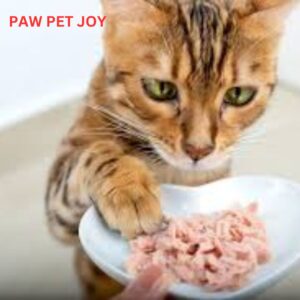
Support Your Cat with Consistent Grooming Practices Cat Healthy
Consistent grooming practices are essential for keeping your cat healthy and comfortable. While cats are known for being meticulous groomers themselves, they can benefit greatly from some extra help and attention from their human caregivers.
One of the most important aspects of cat grooming is brushing their fur regularly. Regular brushing helps to remove loose hair, dirt, and debris from your cat’s coat, reducing the likelihood of hairballs and matting. It also stimulates circulation and distributes natural oils throughout the fur, promoting a healthy shine and preventing dry skin.
Another important grooming practice for cats is dental care. Just like humans, cats can develop dental issues if their teeth are not properly cared for. Make sure to brush your cat’s teeth regularly with a toothbrush and toothpaste designed specifically for felines. You can also offer dental treats and toys to help keep their teeth clean and healthy.
Regular grooming sessions also provide an opportunity for you to check your cat for any signs of skin issues or parasites. While grooming your cat, pay attention to any lumps or bumps, redness, sores, or signs of irritation on their skin. Also be on the lookout for fleas, ticks, or other parasites. If you notice anything out of the ordinary, consult your veterinarian for further evaluation and treatment.
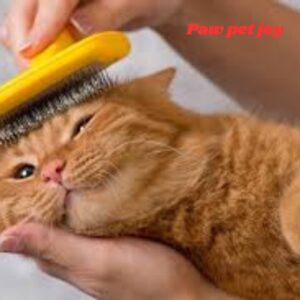
Ensure Regular Litter Box and Toileting Routines Cat Healthy
One important aspect of keeping your cat healthy is ensuring a regular litter box and toileting routine. Cats are naturally clean animals and maintaining a clean and sanitary environment for them to use the bathroom is essential for their health and well-being Cat Healthy
.
Cat healthy is crucial to provide your cat with a clean and suitable litter box. Make sure to choose a litter box that is appropriate for your cat’s size and age. It should be large enough for them to comfortably move around in and have high enough walls to prevent litter from spilling out. Additionally, make sure to place the litter box in a quiet and private area of your home where your cat feels safe and comfortable using it.
It is important to clean the litter box regularly to prevent the build-up of bacteria and odors. Scoop out waste and clumps of litter at least once a day and completely change the litter every 1-2 weeks. Using a high-quality, unscented litter can help to keep odors at bay and provide a more pleasant experience for your cat.
Regular toileting routines are not only important for your cat’s physical health, but also their mental well-being. Cats can become stressed or anxious if they do not have a clean and comfortable place to relieve themselves. By maintaining a consistent toileting routine and providing a clean and suitable litter box, you can help to reduce your cat’s stress levels and promote a sense of security in their environment.
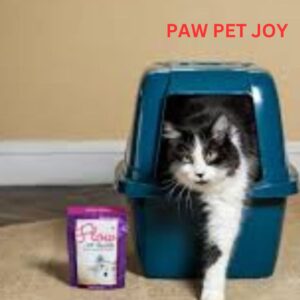
Cats Need Daily Dental Care for Comfort
Cats can suffer from dental issues such as tartar buildup, gum disease, and tooth decay. Neglecting your cat’s dental health can lead to serious health problems and discomfort. Fortunately, there are simple ways to keep your cats teeth clean and healthy.
One of the best ways to ensure your cat’s dental health is by providing them with proper nutrition. Feeding your cat high-quality cat food can help reduce plaque and tartar buildup. Look for cat food that is designed to promote dental health, such as dry kibble that helps clean your cat’s teeth as they chew. Avoid feeding your cat a diet that is high in carbohydrates and sugars, as these can contribute to dental issues Cat Healthy
.
In addition to a proper diet, regular brushing is essential for maintaining your cat’s dental health. Just like us, cats need their teeth brushed to prevent plaque buildup and tooth decay. Start by getting your cat used to having their teeth brushed slowly and gently. Use a soft-bristled toothbrush designed for cats, and toothpaste that is safe for pets. Brush your cat’s teeth gently in a circular motion, paying special attention to the back teeth where tartar tends to accumulate. Aim to brush your cat’s teeth at least three times a week to keep their mouth healthy and fresh.
It’s also a good idea to have your cat’s teeth professionally cleaned by a veterinarian on a regular basis. Dental cleanings involve removing plaque and tartar buildup that can’t be eliminated through regular brushing. Your vet can also check for any signs of dental disease or other oral health issues during the cleaning. Regular dental cleanings can help prevent serious dental problems and keep your cat comfortable and healthy.
Chew toys, dental treats, and dental chews can also help improve your cat’s dental health. These products are designed to promote chewing, which can help reduce plaque and tartar buildup on your cat’s teeth. Look for toys and treats that are specifically designed to promote dental health, and be sure to monitor your cat while they chew to prevent any choking hazards.
By following these tips, you can help keep your cat’s teeth clean and healthy, and ensure that they remain comfortable and happy for years to come. Remember that dental care is an essential part of your cat’s overall health and well-being, so be sure to prioritize their oral health just as you would your own.
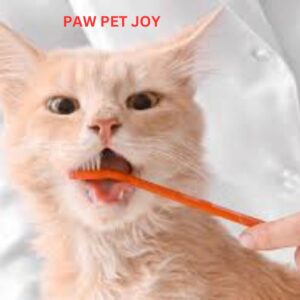
Cats Need Affection and Mental Stimulation Every Day
Just like humans, cats also need affection and mental stimulation to stay happy and healthy. Many people mistakenly believe that cats are independent creatures who can thrive on their own without much human interaction. However, cats are social animals who benefit greatly from being loved, played with, and engaged in activities that keep their minds sharp.
Cats crave love and attention from their owners. By petting your cat, playing with them, and talking to them, you are providing them with the affection they need to feel secure and content. Cats are known for their purring when they are happy, and this soothing sound is a clear indicator of their satisfaction with the attention they are receiving.
In addition to affection, cats also require mental stimulation to keep their minds sharp and prevent boredom. Cats are intelligent creatures who enjoy challenges and problem-solving activities. Providing your cat with toys, puzzles, and interactive games can help keep their minds engaged and prevent behavioral issues that may arise from boredom Cat Healthy
.One way to mentally stimulate your cat is by offering them a variety of toys that encourage them to use their natural hunting instincts. Toys that mimic prey, such as feather wands or laser pointers, can provide hours of entertainment for your cat while also giving them a mental workout. Puzzle toys that dispense treats when solved can also keep your cat engaged and mentally sharp.
Another way to keep your cat mentally stimulated is by incorporating play and exercise into their daily routine. Cats are natural hunters who thrive on physical activity, so providing them with opportunities to stalk, pounce, and chase can help keep them healthy and happy. Interactive play sessions with toys such as feather wands or balls can provide your cat with the exercise they need to stay in shape and release pent-up energy.

Encourage Daily Exercise for General Cat Health
Cat healthy need regular exercise to stay and fit. By encouraging your cat to stay active, you can help prevent obesity, improve circulation, and maintain strong muscles and joints. Plus, exercise can also provide mental stimulation and help reduce stress and anxiety in your cat.
One of the best ways to encourage daily exercise for your cat is to provide them with toys that promote activity. Toys such as fishing poles with feathers or mice on the end, laser pointers, or interactive treat-dispensing toys can keep your cat entertained and engaged. You can also try playing games like hide and seek or chase with your cat to get them moving.
Another way to keep your cat active is to set aside dedicated playtime each day. Spend at least 15-20 minutes engaging your cat in interactive play. Cats love to chase and pounce, so find toys that mimic these natural behaviors to keep them interested. Dangling a string or tossing a ball for your cat to chase can be great ways to get them moving Cat Healthy
.
If your cat enjoys going outside, consider creating a safe outdoor space for them to explore. A screened-in porch or a action can provide your cat with fresh air and new sights and sounds to stimulate their senses. Just make sure the area is secure and free from any potential hazards that could harm your cat.
In addition to structured playtime, ensure that your cat has access to plenty of vertical space. Cats love to climb and perch up high to survey their surroundings. Cat trees, shelves, or window perches can provide your cat with opportunities to climb and jump, helping them stay active and engaged Cat Healthy
.You can also encourage exercise by incorporating feeding puzzles or slow feeding devices in your cat’s mealtime routine. Instead of simply placing your cat’s food in a bowl, make them work for their meal by using puzzle feeders that require them to manipulate objects to access their food. This not only provides mental stimulation but also encourages your cat to move around and stay active.
Lastly, consider enrolling your cat in agility training or agility classes. This can be a fun and challenging way for your cat to exercise both their body and mind. Agility training involves navigating obstacle courses and performing tasks that can help improve coordination, balance, and agility in your Cat Healthy
By incorporating these tips into your cat’s daily routine, you can help promote a healthy and active lifestyle for your furry friend. Remember, every cat is different, so be sure to tailor your approach to suit your cat’s individual needs and preferences. Investing in your cat’s physical and mental health through regular exercise will ensure that they lead a long and happy life.

Hydration Is Key to Your Cat’s Health
One of the most important aspects of keeping your cat healthy is ensuring they are properly hydrated. Staying hydrated is crucial for cats to maintain their overall health and well-being.
Water is essential for cats to help regulate their body temperature, maintain proper organ function, and transport essential nutrients throughout their bodies. Without enough water, cats can become dehydrated, which can lead to serious health issues.
It’s important to provide your cat with access to fresh, clean water at all times. Cats are known for being picky drinkers, so it’s a good idea to offer them a variety of water sources. Some cats prefer still water, while others may prefer running water from a fountain. You may need to experiment to see what your cat prefers.
You can also try adding a bit of low-sodium broth to their water or wetting their dry food to increase their water intake. This can be especially helpful for cats who are reluctant to drink enough water on their own.
Keep an eye on your cat’s water intake and make sure they are drinking enough throughout the day. If you notice your cat is drinking significantly more or less water than usual, it could be a sign of an underlying health issue and you should consult your veterinarian.
In addition to providing plenty of water, you can also help ensure your cat stays hydrated by feeding them a diet that includes moisture-rich foods. Wet cat food is a great option, as it contains a higher water content than dry food. You can also consider adding a bit of water to their dry food to increase their moisture intake.
Proper hydration is especially important for cats who are prone to urinary issues, such as bladder infections or kidney disease. A well-hydrated cat is less likely to develop these types of problems, so keeping your cat hydrated can help prevent future health issues.
If your cat doesn’t seem to be drinking enough water or is showing signs of dehydration, such as dry gums, sunken eyes, or lethargy, it’s important to take action. Encourage them to drink by offering fresh water frequently, and consider adding moisture-rich foods to their diet.
You can also try using a pet fountain or offering them water in different types of dishes to see if they prefer one over the other. If you are still concerned about your cat’s hydration levels, don’t hesitate to contact your veterinarian for advice.
Making hydration a priority in your cat’s daily routine, you can help keep them healthy and happy for years to come. Remember, water is essential for maintaining your cat’s overall health, so make sure they always have access to fresh, clean water to drink.
Spaying and Neutering Will Keep Your Cat Healthy
Spaying and neutering your cat is not only important for controlling the pet population, but it also has numerous health benefits for your cat..
One of the most obvious advantages of spaying or neutering your cat is the prevention of unwanted litters of kittens. With millions of cats ending up in shelters each year, the responsible choice is to ensure that your cat does not contribute to the overpopulation problem. Not only will spaying or neutering help combat this issue, but it will also prevent the birth of kittens that may end up homeless or mistreated.
In addition to preventing unplanned pregnancies, spaying and neutering can also improve your cat’s health in several ways. Female cats that are spayed have a reduced risk of developing breast cancer and are also less likely to develop uterine infections. Spaying your cat before her first heat cycle can greatly reduce the risk of these health issues. Neutering male cats can also benefit their health by reducing the risk of testicular cancer and lowering the likelihood of roaming or fighting with other cats, which can lead to injuries or the transmission of diseases.
Spaying and neutering can also help with certain behavioral issues in cats. Unsprayed female cats may exhibit behaviors such as yowling, spraying, and aggression during heat cycles, which can be stressful for both the cat and their owner. Neutering male cats can reduce their urge to mark territory by spraying and can also minimize aggressive behaviors that are often associated with intact male cats. By addressing these behaviors through spaying or neutering, you can create a more harmonious living environment for you and your Cat Healthy companion.
Another benefit of spaying and neutering is that it can help increase your cat’s lifespan. Intact cats are more likely to engage in risky behaviors such as roaming outdoors and fighting with other cats, which can result in injuries or exposure to diseases. By spaying or neutering your cat, you can reduce the likelihood of these dangerous behaviors and help ensure that your furry friend lives a longer and healthier life.
When considering spaying or neutering your cat, it is important to consult with your veterinarian to discuss the best timing for the procedure. While spaying and neutering can be done at any age, it is typically recommended to perform the procedure before the cat reaches sexual maturity to maximize the health benefits. Your veterinarian can provide you with more information about the procedure, including the potential risks and benefits, to help you make an informed decision about your cat’s reproductive Cat Healthy
Always Keep Your Cat’s Environment Safe Cat Healthy
As a responsible cat owner, ensuring that your feline friend has a safe and secure environment is crucial for maintaining their health and well-being. Cats are curious creatures by nature, and they can easily get into mischief if their surroundings are not cat-proofed. Here are some key tips for keeping your cat’s environment safe:
First and foremost, make sure to always keep toxic substances out of reach. Cats are known for their curious nature, and they may be tempted to investigate and potentially ingest harmful substances such as household cleaners, medications, or toxic plants. Keep these items locked away in cabinets or high shelves where your cat cannot access them.
Secondly, be mindful of potential hazards in your home that could pose a risk to your cat. This includes things like dangling cords, small objects that can be swallowed, open windows without screens, and hot surfaces like stovetops. Take the time to survey your home and address any potential dangers to ensure your cat’s safety.
Additionally, provide your cat with a designated safe space where they can retreat to when they feel stressed or overwhelmed. This could be a cozy bed, a cat tree, or a hiding spot where they feel secure. Cats, like humans, need a place to unwind and relax, so creating a safe haven for your cat is important for their mental and emotional well-being Cat Healthy
.
It’s also essential to keep your cat’s environment clean and free of pests. Regularly clean your cat’s litter box, wash their bedding, and vacuum your home to prevent the buildup of allergens and parasites. If your cat goes outdoors, make sure to also protect them from fleas, ticks, and other pests by using appropriate preventatives recommended by your veterinary

FAQ: How can I tell if my cat is healthy?
Answer: Watch for signs such as a shiny coat, clear eyes, and alert behavior. Regular check-ups with a veterinarian can also help assess your cat’s health.
FAQ: What should I feed my cat to keep them healthy?
Answer: A balanced diet containing high-quality protein, essential fatty acids, vitamins, and minerals is crucial. Consult your veterinarian for personalized dietary recommendations Cat Healthy
.
FAQ: How often should I take my cat to the vet for check-ups?
Answer: Generally, cats should have at least one annual check-up. However, senior cats or those with specific health concerns may require more frequent visits. Your vet can advise on the best schedule for your cat.
FAQ: What vaccinations does my cat need to stay healthy?
Answer: Core vaccinations, such as those for rabies and feline distemper (panleukopenia), are essential for every cat. Additional vaccines may be recommended based on your cat’s lifestyle and risk factors Cat Healthy
.
FAQ: How can I prevent common health issues in my cat?
Answer: Providing a clean environment, regular grooming, appropriate parasite control, and maintaining a healthy weight through diet and exercise can help prevent many common health problems in cats. Regular veterinary care is also crucial for early detection and management of any issues that may arise Cat Healthy
Conclusion:
Meeting your cat’s most basic needs for care – a nutritious diet, proper grooming, consistent medical care, and social/mental engagement – may seem simple, but there are a variety of ways you can enhance your cat’s life and support positive health outcomes. Cat Healthy list of 10 ways to keep your cat healthy will ensure you’re not only providing your cat with basic care, but helping them live their absolute best kitty life!
